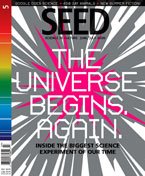For magazine publishers who are concerned, as many are, a recent comprehensive study shows that the highest percentage of greenhouse gas emissions (GHG) comes from manufacturing at pulp and paper mills, with transportation the second highest contributor of GHG emissions. (Our thanks to Neva Murtha of
Markets Initiative in Vancouver for putting us onto this.)
Potential ways to reduce GHG emissions for the magazine supply chain include improving energy efficiencies in the pulp and paper manufacturing process, source reduction, using more efficient modes of transportation and working with transportation providers to encourage fuel-efficient engine designs.
These findings are in a study called
Following the Paper (Trail: The Impact of Magazine and Dimensional Lumber Production on Greenhouse Gas Emissions: A Case Study prepared by Dr. Stith T. Gower of the Department of Forest Ecology & Management at the University of Wisconsin at Madison. The study was financed and produced by the H. John Heinz III Center for Science, Economics and the Environment in Washington, in cooperation with a number of major players, including
- Canfor Corporation— a leading integrated forest products company based in Vancouver
- The Home Depot—the world’s largest home improvement retailer based in Atlanta, Georgia
- Stora Enso -- a global integrated paper, packaging and forest products company, the leading producer in North America of coated and supercalendered papers for the printing and publishing industries with seven mills in the Midwestern United States and one mill in Nova Scotia. And
- Time Inc. , which publishes over 149 titles with more than 300 million readers. In 2005, Time Inc. magazines accounted for 23% of the total advertising revenue of U.S. consumer magazines. People, Time and Sports Illustrated were ranked one, three and four in ad revenue respectively.
The study followed the greenhouse gas life cycle analysis of two huge magazines (
In Style and
Time). It found that
- The final fate of unrecovered magazine (landfilled, incinerated or recycled) can potentially have a large effect on the GHG shadow of the magazine
- Consumers, governments, and society can all impact the paper and wood product chains by determining the final fate of paper waste products.
“This is a pathbreaking study because the participating companies provided actual data from their own production chains,” according to Anthony Janetos, Vice President of The Heinz Center, who served as a scientific advisor for the study. “Few studies have quantified the carbon content and emissions from wood and paper materials and none have had access to the industries’ own data,” he said.
Data from the study can be used to identify potential opportunities to reduce GHG emissions, to highlight management practices that can potentially increase carbon sequestration and to identify improvements in disposal practices of end products. Janetos noted, “Opportunities to improve the life cycle of the paper and wood products span the industrial sector, government forest management agencies and the consumer. Opportunities to improve must also consider cultural, social and economic factors.”
Concentrations of atmospheric greenhouse gases (GHG) have increased over the 20th century as a result of human activities, according to the Intergovernmental Panel on Climate Change (IPCC) 2001 report. From the years 1750 to 2000, the concentration of carbon dioxide (CO2) increased approximately 31 percent.
“The rapid rise of atmospheric CO2 concentration, and other GHG, is one of the most pressing environmental problems facing society today due to a variety of environmental, social, and economic problems caused by global climate change,
” Janetos said.
“Only some of the potential actions identified above are under the direct control of the individual companies in this study,” Janetos noted. “Others and perhaps especially those actions that potentially affect GHG emissions from purchased power must be addressed broadly by society.”
To view the study in its entirety, please click here.
The Heinz Center, established in 1995 in memory of Senator John Heinz, is a nonprofit, nonpartisan institution dedicated to improving the scientific and economic basis for environmental policy and to developing innovative solutions to environmental problems.
(As an aside, the vice-chair of the Heinz Centre is Teresa Heinz Kerry, wife of the erstwhile presidential candidate and the widow of the ketchup heir, Senator Heinz.)




















